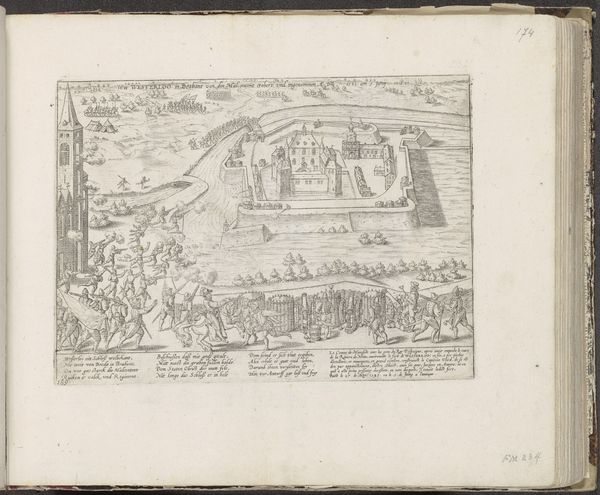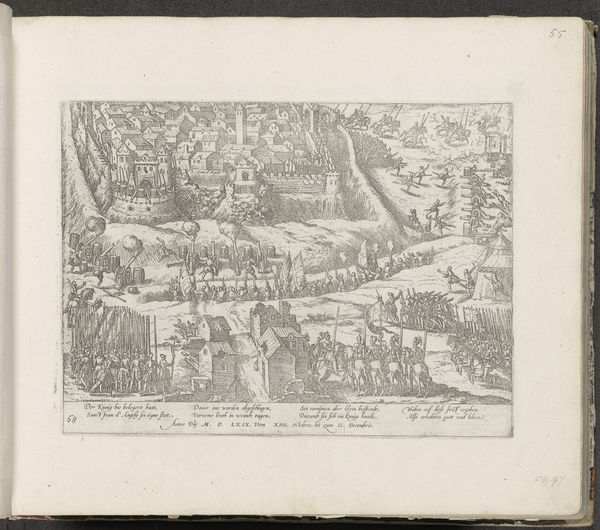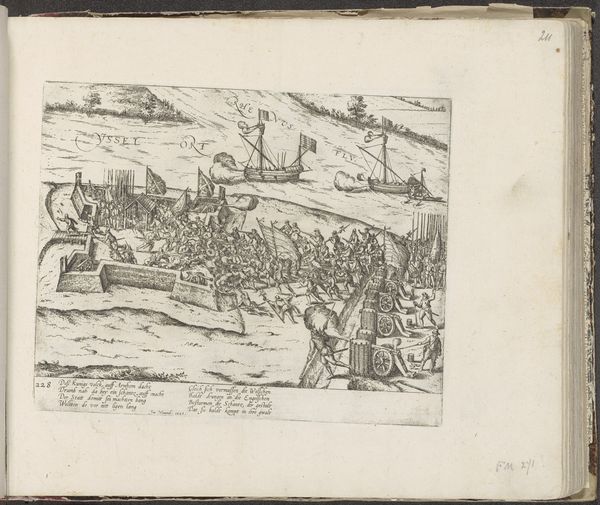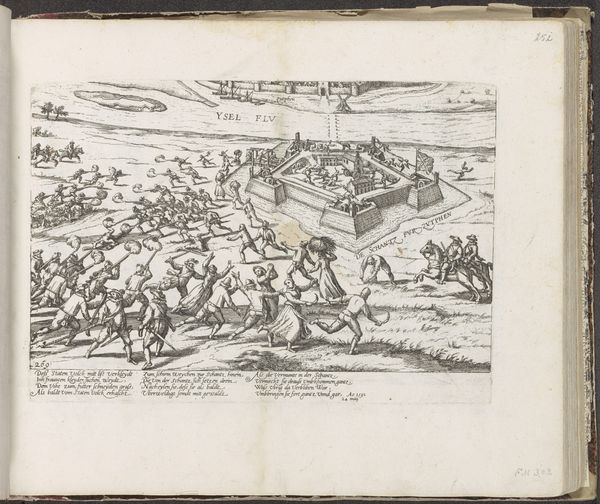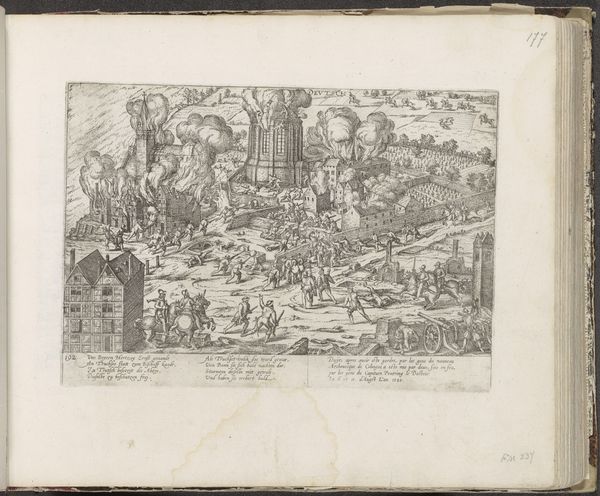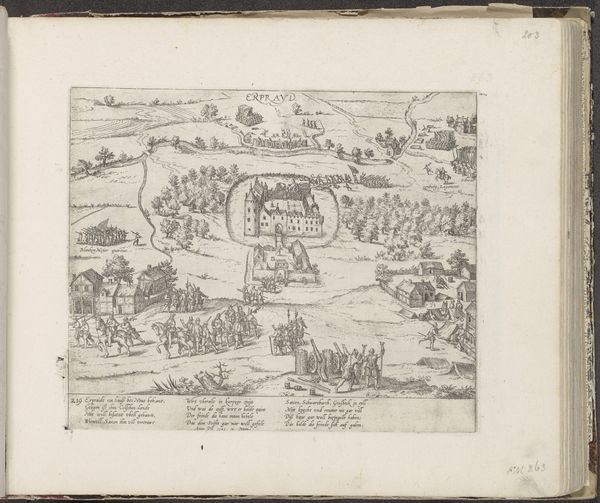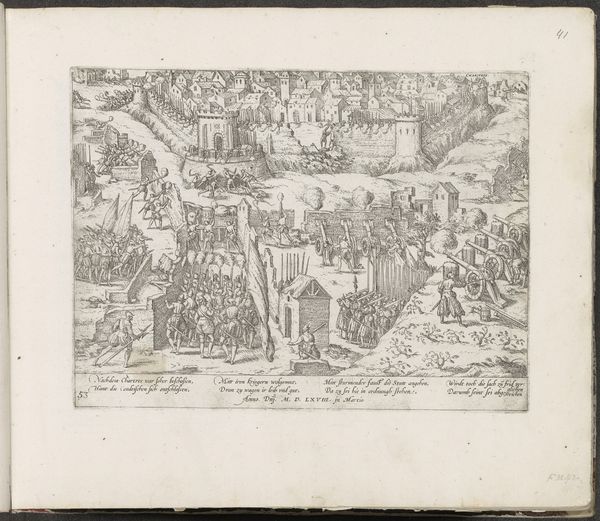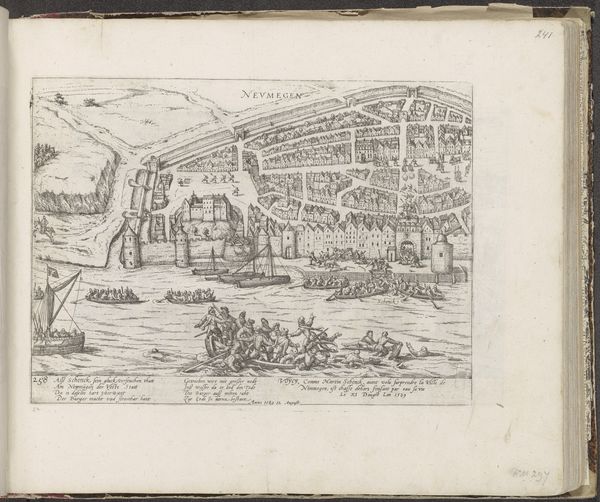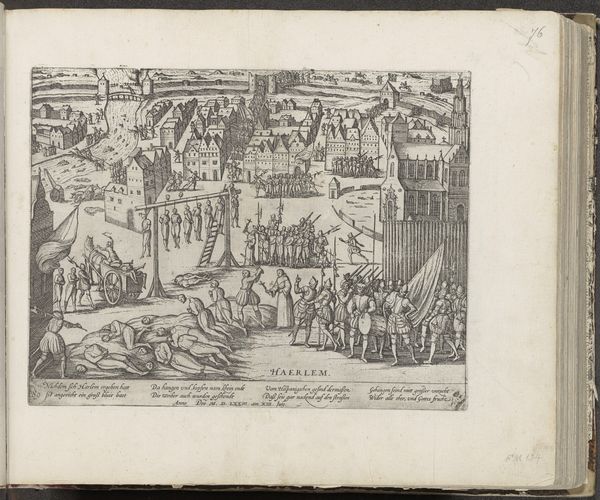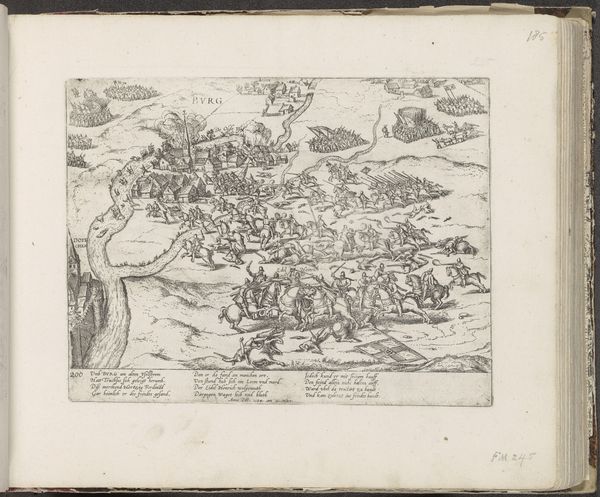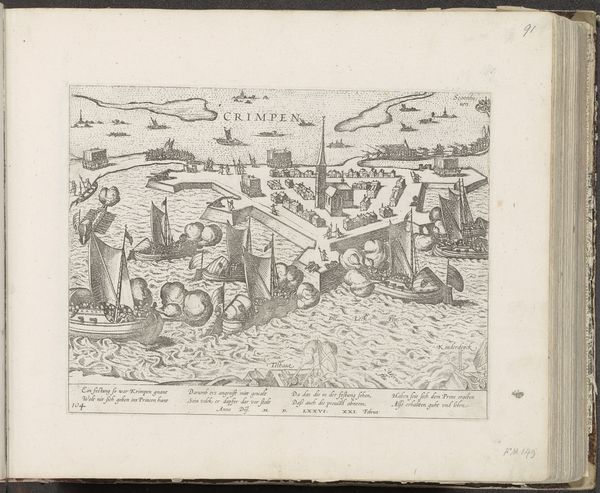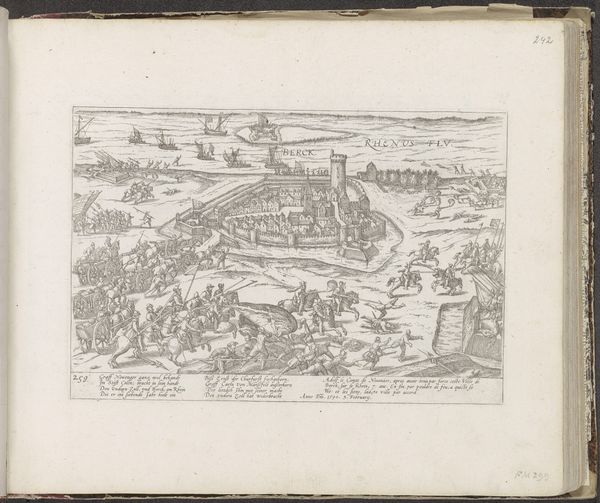
print, engraving
# print
#
landscape
#
mannerism
#
cityscape
#
history-painting
#
engraving
Dimensions: height 200 mm, width 288 mm
Copyright: Rijks Museum: Open Domain
Curator: Indeed. This print, titled "Verovering van Totis in Hongarije, 1597" made by Frans Hogenberg sometime between 1597 and 1599, captures a specific historical moment with meticulous detail. What are your initial thoughts when you look at it? Editor: It feels so…distant. Like peering into a different world with its rigid figures and almost diagrammatic layout. It's a very busy composition with lots of action happening all over. How should we begin to unpack the complex story within? Curator: Given its representation of conflict and power dynamics, what might this artwork be trying to communicate about 16th-century European society? Think about how wars shape and are shaped by class, gender, and identity. Editor: Well, obviously, it’s a depiction of warfare, of military power and territorial ambition. I wonder, though, if it reflects not just the *act* of conquest, but also the justifications *for* it? Was this intended as a glorification or perhaps even a critique? Curator: That’s a crucial question. Consider the role of the artist. Hogenberg was creating these prints during a time of intense religious and political upheaval. Whose perspective is being prioritized here? Is it a straightforward celebration of military victory, or might there be more nuanced social commentaries embedded within the image's detail? Look closely at the expressions of the figures, their gestures… Editor: You know, the longer I look, the less celebratory it feels. There's a certain grimness, a sense of inevitable suffering etched into the scene. I also notice how the ‘losers’ don’t seem to have much of a visual presence here, as if to emphasize their historical erasure from the story of Totis… Curator: Exactly. And by bringing attention to those absences and silences, we start to challenge the dominant narratives. Art gives us opportunities to unpack whose voices and experiences are prioritized or ignored, and what were the costs of warfare at the time, beyond the mere territorial gains? Editor: This has completely changed how I see the artwork. Initially, I saw a distant historical scene. Now, I’m thinking about its deeper connection to cultural values, identity and social commentary, which I hadn’t considered before. Curator: And hopefully it encourages us to interrogate similar power dynamics and their echoes throughout history to this very day.
Comments
No comments
Be the first to comment and join the conversation on the ultimate creative platform.
